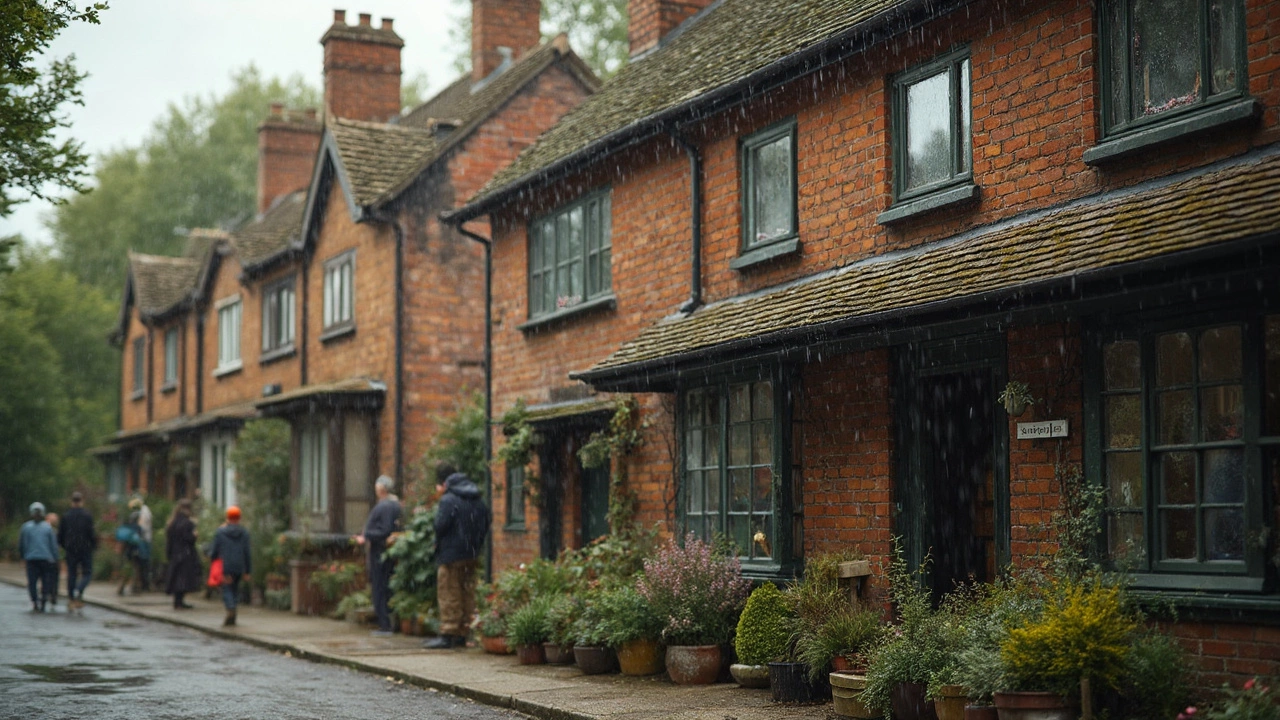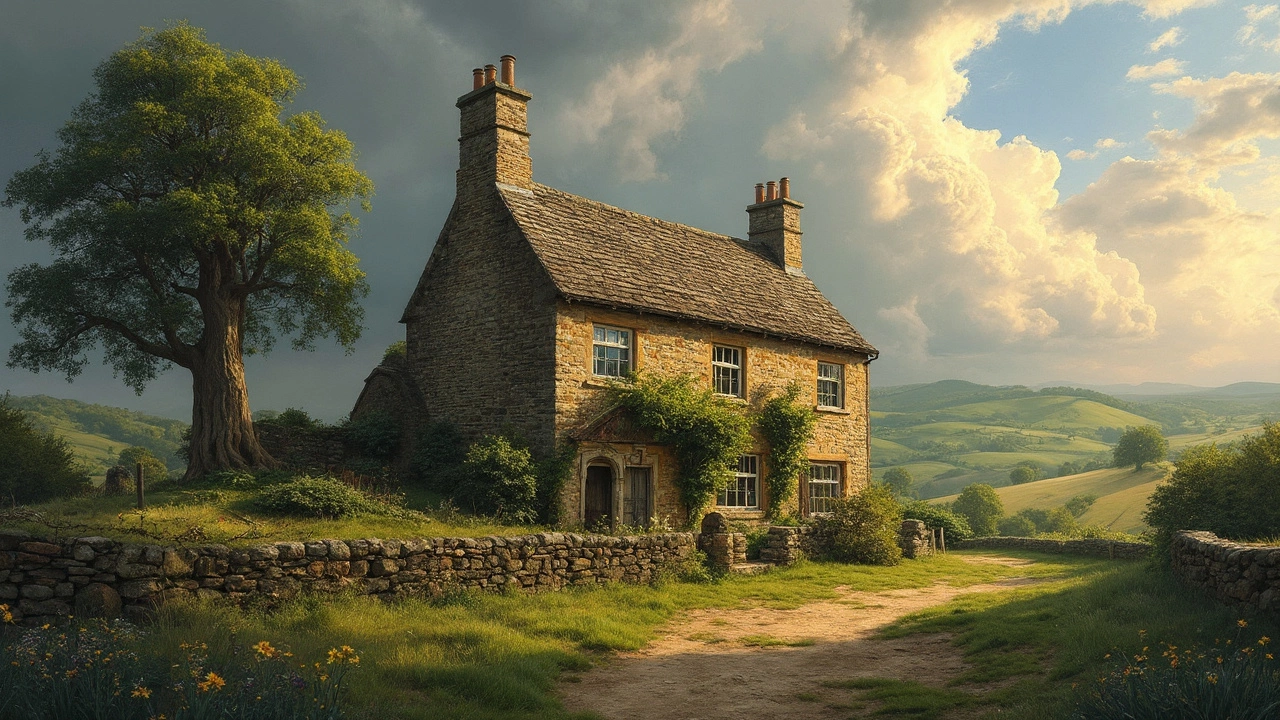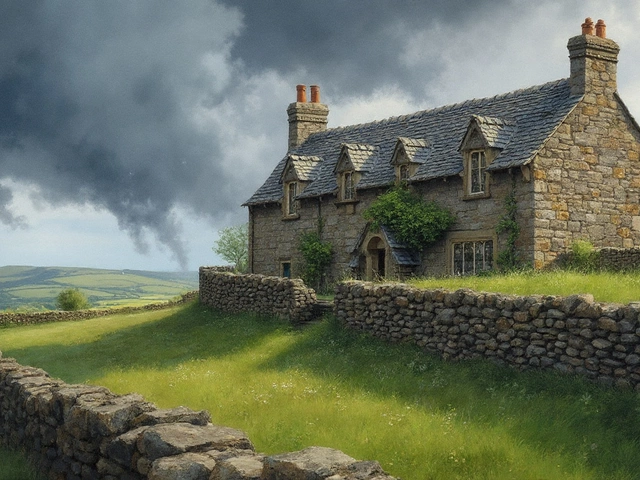If you’re planning to build a house and want it to last longer than your mortgage (maybe even outlive you), you need to choose your materials wisely. Not every piece of wood, brick, or stone is going to stand up to decades of rain, heat, and wild weather. The difference between a home that looks solid and one that actually stays that way for a century often comes down to what it’s made of.
Some materials barely blink at mold, bugs, or frost, while others buckle under pressure after a few years. The trick is knowing what holds up best in real life—not just in a catalog or a showroom. We’re not talking theory; there are houses made of certain materials that have been around since before your great-grandparents were born. So, if you’re wondering where to invest those hard-earned dollars for peace of mind (and a legacy), stick around. There’s more to long-lasting houses than just picking the thickest wall.
- How We Decide What 'Lasts Longest'
- Stone: The Old Champ
- Modern Marvels: Concrete, Steel, and More
- Practical Picks and Tips for Homeowners
How We Decide What 'Lasts Longest'
When it comes to figuring out which material actually lasts the longest for building a house, you can’t just take a contractor’s word for it. There are some basic but solid benchmarks. We look at how a material holds up against water, pests, weather, and even fire. It's not just about age, either. You want your home to feel sturdy, safe, and cost you less in repairs over the years.
To keep things clear, here are the big questions experts ask when judging longest lasting material for houses:
- How old are the homes standing today? If you spot houses over a hundred years old and still solid, that says a lot about what they're made of.
- How much maintenance does the material need? Some stuff is tough but requires constant fixing or special treatments to keep going.
- How does it react to bugs, mold, and water? Termites, rot, and leaks destroy more homes than earthquakes ever could.
- What happens during wild weather? Think hurricanes, blazing hot summers, or freezing winters.
- Is it safe in a fire? Some materials just don’t burn easily—others go up in flames fast.
Let’s get real with some numbers. Check this table for an idea of how common building materials stack up according to actual lifespan estimates:
| Material | Average Lifespan (Years) | Typical Maintenance |
|---|---|---|
| Stone | 100+ | Low |
| Concrete | 60-100 | Low - Medium |
| Brick | 75-100 | Medium |
| Steel | 50-100 | Low |
| Wood | 20-50 | High |
There’s no single answer for everyone, though. The best pick changes depending on your climate, soil, and budget. But knowing which materials win longevity awards can help you avoid the stuff that’ll only last until your next big renovation.
Stone: The Old Champ
If you want proof that longest lasting material isn’t just hype, look at stone houses in Europe—some are still standing strong after 500 to 1,000 years. Stone has been the go-to for castles, churches, and cottages because it shrugs off wind, fire, and bugs. Just check out places like the Scottish Highlands or Greece, where thick stone walls handled centuries of storms and harsh winters with barely a scratch.
The secret sauce here is stone’s density. It doesn’t rot, it doesn’t burn, and insects can’t eat it. That’s a big win if you’re after low maintenance. Granite, limestone, and sandstone are popular picks. Granite takes the lead on durability, but limestone is easier to work with and still lasts ages.
But there’s a catch: stone houses cost more up front. You need skilled masons, and heavy blocks aren’t easy to move or stack. Plus, if you mess up drainage or skip weatherproofing, even stone can crack over time. So, here’s what actually works if you want stone to go the distance:
- Use local stone when possible—it matches your climate, and you’ll save on transport costs.
- Focus on solid foundations and proper waterproofing. Even the toughest stone hates standing water.
- Don’t skimp on skilled labor. A botched stone wall can turn into a headache fast.
The best part about stone? It barely needs repairs, and when it does, you’re usually just replacing mortar between the blocks. If you want to build a house that sticks around for generations with minimum fuss, stone has been delivering on that promise for longer than any other material out there.

Modern Marvels: Concrete, Steel, and More
When it comes to buildings that go the distance, modern materials have changed the game. Concrete and steel are everywhere because they’re strong, consistent, and less likely to let you down than older picks like untreated wood. Walk through any city and you’ll see these materials towering above the rest, sometimes literally.
Longest lasting material lists almost always include concrete. It’s not just hype. Reinforced concrete (which is concrete mixed with steel rods or mesh) can hang on for over 100 years when done right. Even the Hoover Dam, which is basically a giant block of concrete, is still standing strong after nearly 90 years—hardly a crack. The trick is making sure the rebar inside doesn’t start rusting, usually with good sealing and drainage.
Steel frames are super popular for taller or modern homes. They’re not going to rot or become termite food, and if you keep them dry and give them a protective coating, they’re pretty much immune to most problems. That said, steel needs a bit of TLC to avoid rust in humid or coastal areas. Regular checks and anti-rust paint or powder go a long way.
Let’s compare a few of the big players in terms of durability, cost, and care:
| Material | Average Lifespan | Common Problems | Upkeep Tips |
|---|---|---|---|
| Reinforced Concrete | 75-100+ years | Cracking, rebar rust | Seal cracks, check drainage |
| Steel (treated) | 50-100+ years | Rust, corrosion | Protective coatings, keep dry |
| Modern Brick | 100+ years | Mortar breakdown | Repoint mortar joints |
| Engineered Wood Products | 30-80 years | Moisture, insects | Proper sealing, pest control |
There’s also a new class of stuff like fiber cement siding (think HardiePlank) and structural insulated panels. These might not make up the whole frame, but they’re lifesavers at fighting mold, rot, and fire compared to regular wood or vinyl. Fiber cement, for example, often comes with a 30 to 50 year warranty and hardly needs any work other than a fresh paint job now and then.
If you want low-maintenance and serious durability, go with a good quality concrete or steel frame, then use materials like fiber cement on the outside. Take care of basic upkeep—just a couple of days a year—and you’ll likely have a house that’s not just long-lasting, but also cheaper to maintain over time.
Practical Picks and Tips for Homeowners
If you want a house that stares down time and stays solid, you’re going to want to pay close attention to what actually works in the real world. When talking about the longest lasting material for home building, stone, concrete, and brick always top the list for good reason—these materials have left their mark for centuries. But picking the best one for your situation is all about balancing durability, cost, and even climate.
Stone isn’t just for castles. If you use granite or basalt, you’re pretty much guaranteed a house that lasts a hundred years or more. Brick homes built right (think double walls and quality mortar) have a lifespan of 100–150 years, no sweat. Concrete—especially reinforced with rebar—can stick around for 60–100 years, easy. Just ask anyone living in a mid-century house today. Metal frames, like steel, are super tough. They resist pests and fire, but you need to watch out for rust if you live somewhere damp.
Here’s a handy table so you can see what you’re really signing up for with the most common long-lasting materials:
| Material | Typical Lifespan (years) | Key Pros | Drawbacks |
|---|---|---|---|
| Stone | 100–1000 | No rot, bug-proof, weather-resistant | Expensive, heavy (needs strong foundation) |
| Brick | 100–150 | Low maintenance, fire-resistant | Mortar can crack, moderate insulation |
| Concrete (reinforced) | 60–100 | Flexible shape, strong vs. disasters | Can crack, not great insulator unless treated |
| Steel | 60–100 | Pest/fire-proof, fast build | Rust risk, cost varies with market |
Before you jump into the hardware store or call a contractor, make a checklist. What’s your climate like? If you’re in a flood or hurricane zone, concrete and stone handle water and high winds like champs. Freezing winters? Brick and stone won't warp. Got termites? Wood’s off the table—stick with masonry or steel.
Still weighing your options? Try these tips to get the most from your material choice:
- If you pick stone, invest in skilled masons and a solid foundation. The upfront cost stings, but repairs down the line are rare.
- Choose high-quality, kiln-fired brick and use mortar that matches your local weather. It makes all the difference for longevity.
- For concrete, make sure the mix is right for your area. Adding waterproofing or insulation layers pays off fast.
- If you’re eyeing steel, pick galvanized or coated types and keep up with inspections to avoid sneaky rust spots.
Whatever you choose, remember: the best materials still need good design and proper construction. Cut corners on crew or planning, and even stone will let you down. Spend your budget where it counts—on stuff that can actually go the distance. You’ll thank yourself years from now when your place is still standing and your to-do list isn’t full of repairs.





